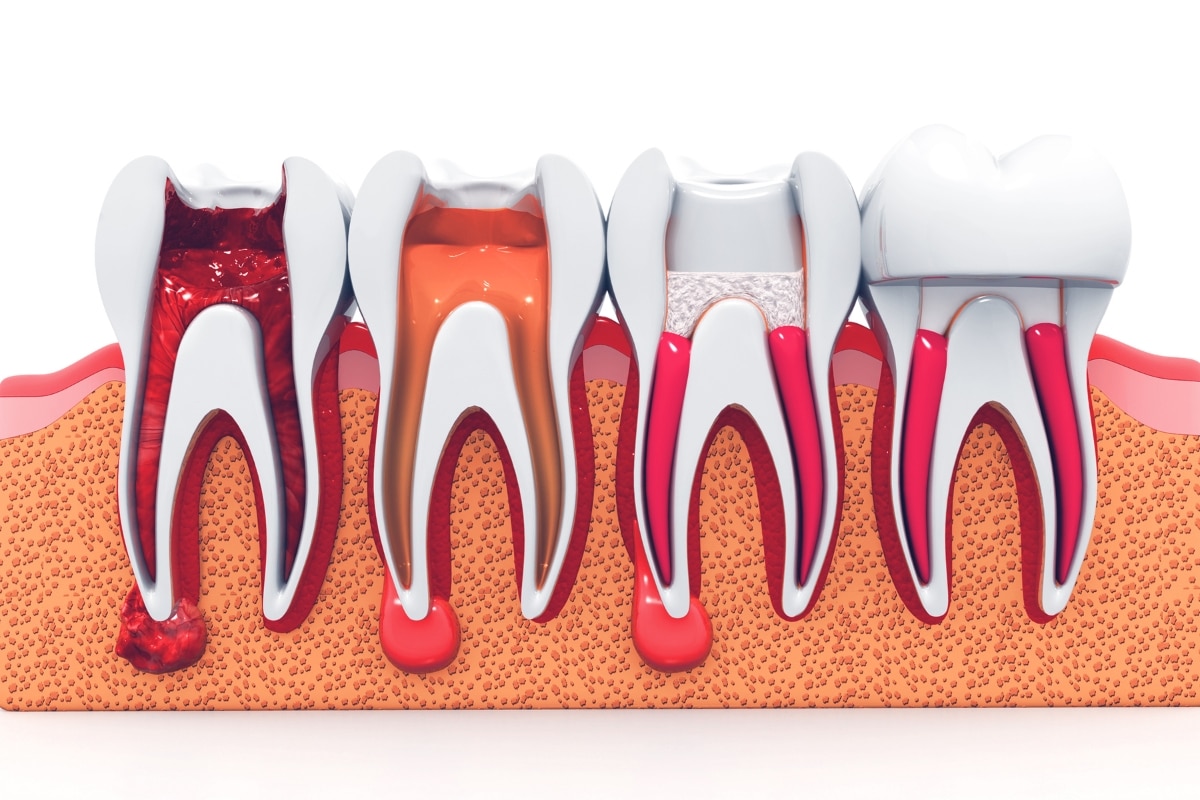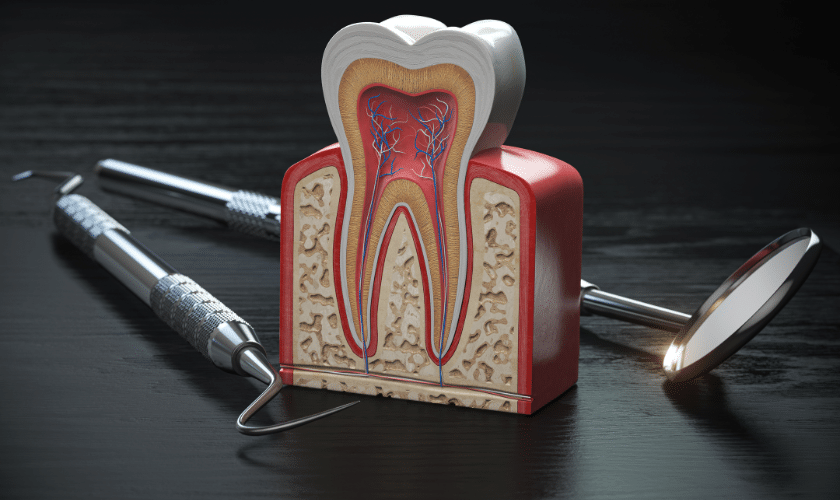
Root canal treatment is often surrounded by fear and misconceptions. Many people worry it will be excruciating and unbearable. These fears can make the idea of getting a root canal seem daunting.
This blog will address the pain levels associated with root canal treatment and separate fact from fiction. You may reduce your anxiety and make an informed choice regarding your dental health by being aware of what actually occurs both before and after the surgery.
Understanding Root Canal Treatment
A badly decaying or infected tooth can be saved by a root canal surgery. The inside of the tooth’s pulp that is injured or infected must be removed as part of the treatment.
First, the dentist numbs the area with local anesthesia to ensure comfort. Next, they make a small opening in the tooth to access the pulp chamber. The pulp is then carefully removed, and the root canals are cleaned and disinfected.
Afterward, the dentist fills the canals with a special material to seal them. To restore the tooth’s appearance and functionality, a crown or filling is placed on top of it. This process helps save the tooth and prevents further infection.
Common Myths About Pain
Myth #1: “Root canals are extremely painful.”
One of the most pervasive myths is that root canals are excruciatingly painful. In truth, modern root canal procedures are generally well-tolerated and comfortable. Thanks to effective local anesthesia, you should feel no pain during the treatment itself. The procedure involves numbing the affected tooth and surrounding area, so you only experience pressure or vibrations, not pain.
Post-procedure discomfort is usually mild and temporary, manageable with over-the-counter pain relievers. The fear of intense pain often stems from outdated practices or misconceptions, but today’s techniques have made root canals much more comfortable.
Myth #2: “The pain will last for weeks.”
Another common belief is that pain from a root canal will linger for weeks. While some discomfort is normal after the procedure, it typically subsides within a few days. Most patients report only mild soreness or sensitivity, which can be effectively managed with prescribed or over-the-counter pain medications.
The duration and intensity of any post-treatment discomfort vary depending on the extent of the infection or damage before the procedure, but it rarely lasts beyond a week. With proper care and following your dentist’s aftercare instructions, you should experience a relatively quick recovery.
Myth #3: “It’s worse than having a tooth extracted.”
Some people think a root canal is more painful than having a tooth extracted. In reality, root canals are often less painful than extraction because they aim to save the tooth rather than remove it.
After an extraction, the recovery period can be longer and more uncomfortable due to the removal of bone and tissue. A root canal, on the other hand, allows you to keep your natural tooth and generally involves a quicker and less painful recovery.
The discomfort undergone with a root canal is usually less severe compared to the aftermath of an extraction, making it a preferable option for many patients.
The Reality of Pain Levels
Pre-Treatment:
Before the procedure, your dentist will use local anesthesia to numb the area around the affected tooth. You may feel a slight pinch from the needle, but this is usually brief. Some patients also opt for sedation to help them relax.
During the Procedure:
During the root canal, you should feel no pain because of the anesthesia. You might experience some pressure or vibrations, but this is normal. Modern techniques and tools make the process more comfortable than ever.
Post-Treatment:
After the procedure, it’s normal to experience some mild discomfort or sensitivity. This is usually manageable with over-the-counter pain relievers. The discomfort should decrease within a few days. Follow your dentist’s aftercare instructions to ensure a smooth recovery.
Factors Influencing Pain Perception
Individual Pain Threshold:
Pain tolerance varies from person to person. What feels uncomfortable to one person might be minimal to another. Your perception of pain can influence your experience during and after the treatment.
Condition of the Tooth:
The severity of the tooth’s condition before the procedure affects pain levels. Teeth with severe infection or damage might cause more discomfort post-treatment compared to those with minor issues.
Dentist’s Skill and Experience:
A proficient dentist can make a significant difference. Efficient professionals use techniques that minimize discomfort and ensure the procedure is as smooth as possible.
Pain Management and Aftercare
Anesthesia and Sedation Options:
Local anesthesia is used to numb the affected area, and sedation can help if you are anxious. Both options are effective in managing pain during the procedure.
Over-the-Counter Pain Relief:
After the treatment, over-the-counter pain relievers like ibuprofen or acetaminophen can help manage any discomfort. Follow your dentist’s recommendations for dosage and frequency.
Aftercare Tips:
To minimize discomfort, avoid hard or sticky foods, and follow any specific care instructions given by your dentist. Keeping the area clean and avoiding vigorous brushing near the treated tooth will also aid in a quicker recovery.
When to Seek Help?
Signs of Complications:
Contact your dentist if you experience severe pain, swelling, or prolonged discomfort beyond a few days. These could be signs of complications or infection.
Follow-Up Visits:
Attending follow-up appointments is crucial. Your dentist will ensure the tooth is healing properly and address any concerns you might have.
Root canal treatments are often feared for their pain, but the reality is much less daunting. With proper anesthesia and pain management, most people experience minimal discomfort. If you have any concerns or questions, don’t hesitate to discuss them with your dentist. They can provide personalized information and reassurance about your treatment.








